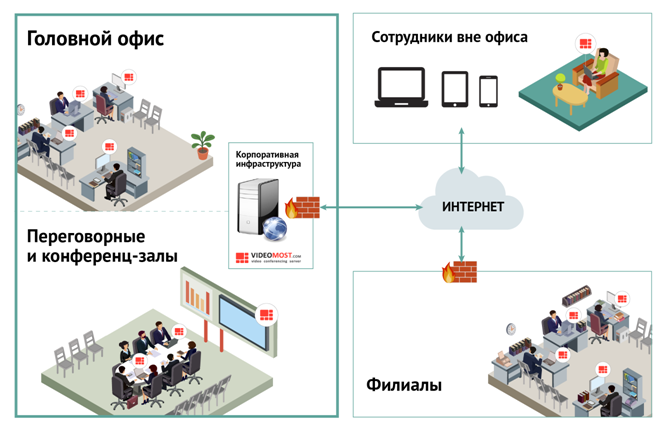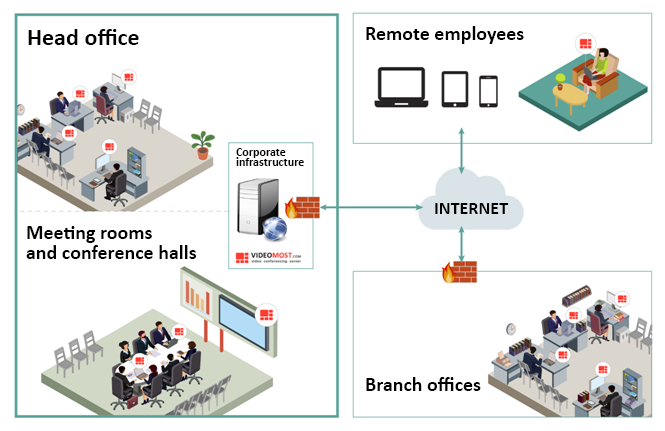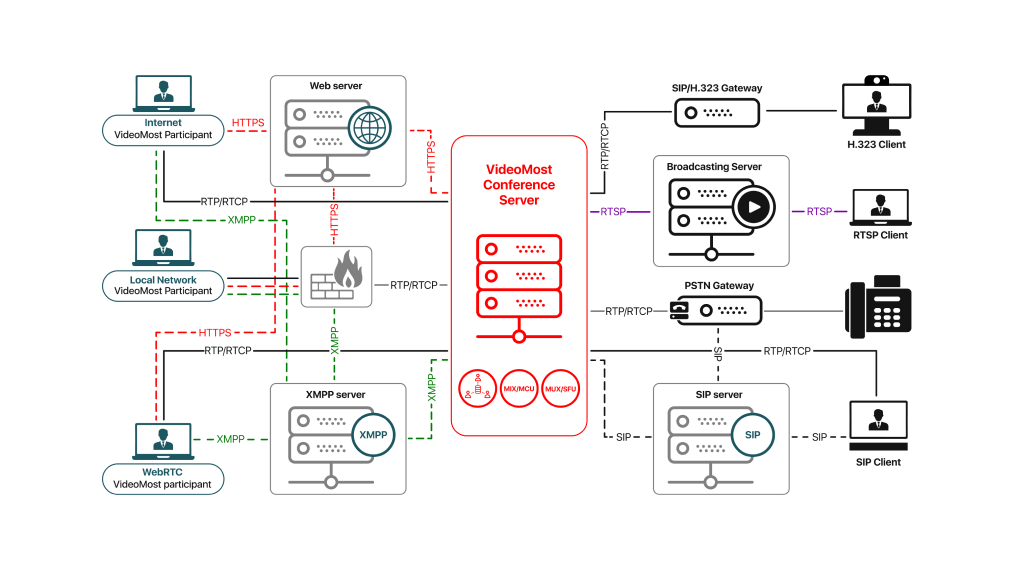VideoMost video conferences for telemedicine and telehealth
HD video conferences are the core for telemedicine that becomes just medicine today. With a growing need for medical access, “telehealth” is equal to “healthcare” and all medical organizations and institutes have to invest much in telemedicine to maximize positive patient outcomes.
Video communications allow medical personnel to evaluate patients and diagnose illnesses in real-time without the need for either the patient or the practitioner to travel. Medical professionals also use video communications to access certification programs, for continuing medical education, and to train others. Using video communications for telehealth allows hospitals to tap individual expertise across the world. Patients get the care they need regardless of their location, and often faster and at a reduced cost.
VideoMost powers integrated video conferences to launch or scale up telehealth usage:
- Remote patient video monitoring to have simple questions answered in real-time, reducing the risk of small issues becoming major complications that lead to hospitalization
- Virtual interactions:
- visits/consultations with patients and/or family members
- internal meetings between physicians/nurses and medical team discussions
- real-time clinical diagnosis, treatment, care or support
- Mobile telehealth apps and services to give patient access to virtual care from any place, at any time. Medical experts can use mobile telehealth apps to answer a patient’s health questions, share test results with a patient, schedule appointments, and issue reminders
- Sharing of digital diagnostic images, prerecorded videos or photos, health history and other material worth to review while remote medical consultation
VideoMost video conferences are also fits needs for healthcare education via webinars and CDN broadcastings as well for hospital administrative meetings.
VideoMost key benefits for successful healthcare communications:
- HD video, audio, and screen sharing across mobile and desktop user terminals
- Cross-platform IM/presence with file sharing
- Webinars and broadcasting over CDN
- Works in poor network environments with low and changing bandwidth
- Compatible with legacy hardware video conferencing systems
- Fast and easy to deploy, scale, manage and use.




